Why aren’t writers more concerned that ChatGPT is more widely used than AI art? There is a general consensus that generative AI will have an impact on all types of office professions. Anyone who is classified as a white collar worker, including writers, programmers, and artists, is at risk.
AI is capable of a wide range of activities. These include the creation of stunning visuals, decent language, coding, and a variety of other tasks. Even if it doesn’t work perfectly, it has the potential to eliminate creative and intellectual employment. A human employing a cutting-edge AI system will soon be equivalent to a whole team of workers.
Everyone has heard the warning about ChatGPT. When the well-known chatbot was created, generative AI had already been in development for a while. Most people weren’t aware of it however.
Some people still won’t even understand what AI is, but every day more people become aware that generative AI is a turning point. Some employees view AI systems as a way to improve their skills; they can see the benefits for advancement and productivity.
Some don’t. Many despise technological advancement at the point when it endangers their way of life. They loathe it and the cause can be entirely personal in some circumstances. In most cases however it represents a deeper struggle with the engine that propels society forward. It seems not to care who it leaves behind.
A small number of occupations have a significant concentration of antagonism against generative AI.
GENERATIVE AI IS BEING TAKEN VERY SERIOUSLY BY ARTISTS
It seems that artist, including designers, painters, illustrators, etc, are more angered and fearful than the others. It’s easy to see why programmers are so enthusiastic about AI. However writers, who face comparable challenges to artists, seem less concerned. Aren’t they also in danger?
Traditional artists frequently express anxiety towards image-generation tools like DALL-E and Stable Diffusion. This has been the case since the new AI art scene started to grow in early 2021. Some people are highly outspoken on social media, but not always in the most polite way. They go to great lengths to defend their rights. Many are working together to put pressure on lawmakers to enact sufficient regulation of generative AI. They are also reporting on the dubious legal practices of AI corporations. There will be lawsuits, and they might or might not succeed in getting what they want. However, they are making an effort.
Writers aren’t as concerned however
Generative AI is either being embraced by them, rejected as useless, or completely ignored. There is a huge difference between the average threat posed by AI to artists and writers however. It is much easier to spot stylistic similarities in pictures than text, you can instantly spot them in imagery.
In visual art, style is an essential quality. In writing, it is also there but less crucial.
Artists are consequently more susceptible to AI’s remarkable capacity to remix the type of material it has been fed. Stable Diffusion and Midjourney, two generative models, are excellent at simply parroting styles; all it takes is the author’s name in the prompt to give each output the appearance of being specially crafted by them.
Nevertheless, if you pay attention you’d find that generative AI isn’t that good at replicating artists. While it may appear to perform a fantastic job on the surface, closer inspection reveals odd features that destroy the illusion of perfection. The findings appear to be a shoddy reproduction attempt to an expert eye.
If AI art models’ strength is imitating a style yet struggle to accurately replicate them, why do artists react so strongly to attempts to plagiarize their work?
The rationale has more to do with how we interpret art than how it is made. Because they believe AI can flawlessly duplicate something with which they strongly identify. They worry that nonartists won’t care because we are unable to fully comprehend the smallest details of visual art.
While generative AI may not work for artists, it works just fine for the rest of the unskilled world.
OUR PERCEPTIONS OF IMAGES AND LANGUAGE VARY
In contrast to words, humans are less sensitive to the distinctions between right and wrong and good and evil in images. Compared to text generators, the bar for what passes as sufficient is lower for image generators.
Although AI writing tools have excellent grammar, they fabricate facts in argumentative essays and are unable to accurately portray realistic characters in fiction compared to writers.
Generally speaking, the components of language are significantly more accurate signifiers of meaning than visuals. This suggests that whenever ChatGPT makes a mistake you instantly mistrust it. Visually, little variations from correctness are less important.
Language exists in the world of certainty. The connection between the author’s goal and the reader’s perception is clear, unmistakable, and immediate. In visual art, that isn’t always the case. There is a greater overlap in how people read words than there is with how you link the visual in a painting to the meaning and the idea behind it. A picture is worth a thousand words often refers to the immense depth of the visual arts, but it also implies that it is far less tangible.
In conclusion, writers are less vulnerable to generative AI since texts don’t rely as heavily on style as images do. The incapacity of AI to accurately replicate styles has a significant impact on words but not on visuals. The ideal target for AI generators is created by a low threshold to accept a given result as correct.
